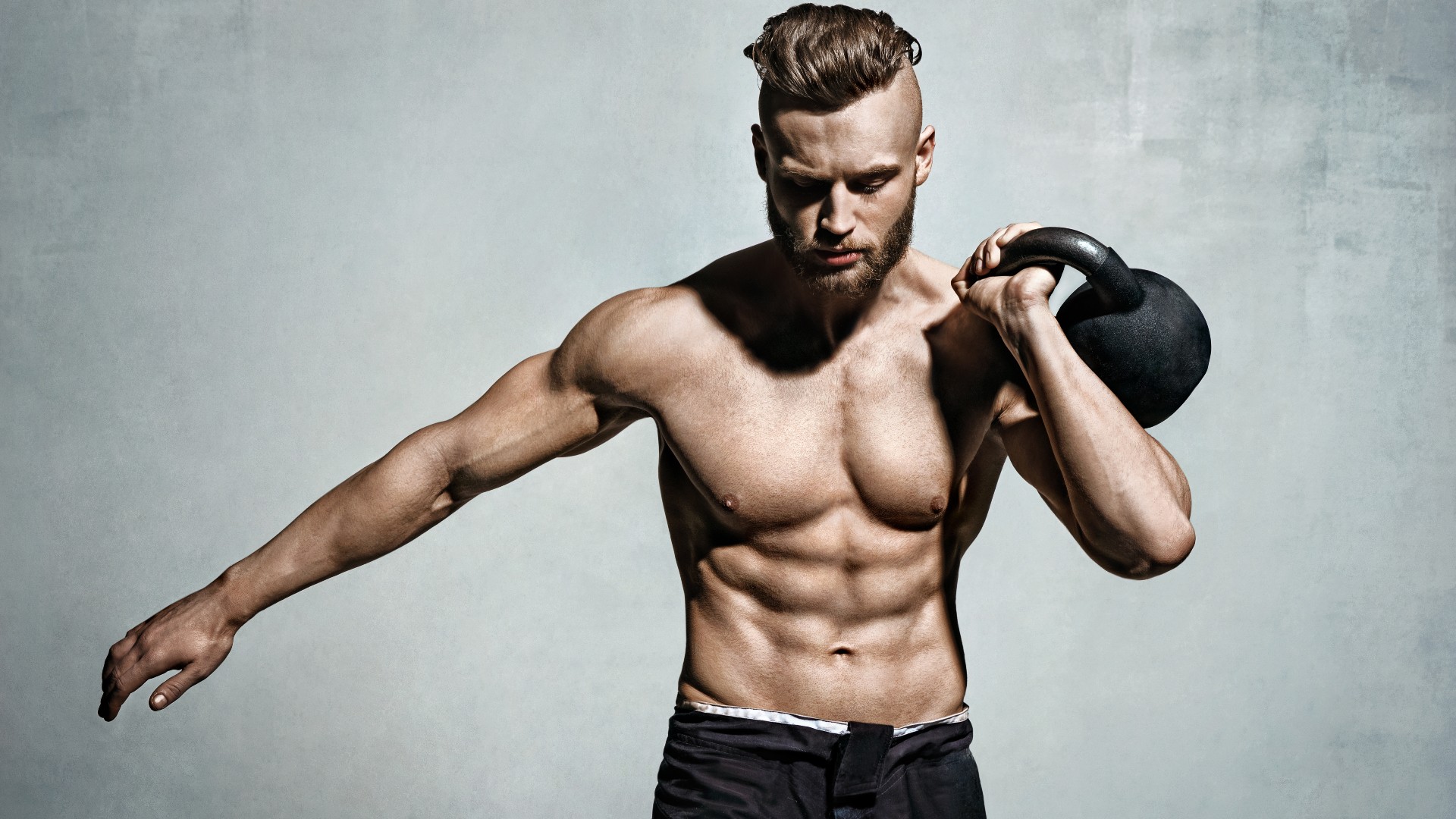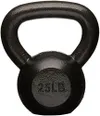
Look no further than this kettlebell for beginners workout to strengthen muscles all over the body. It takes just 15 minutes to do, builds full-body strength and muscle and you only need one set of the best kettlebells and your exercise mat.
Kettlebells are a strength and conditioning tool renowned for challenging stability, coordination and balance, and they’re more versatile than dumbbells for getting creative with even the most well-known and over-used exercises.
Best of all, this routine has beginners in mind, and you can scale each move to your ability. Here’s how to do it, alongside some trainer tips for packing the biggest punch while you work.
Watch the 5-move kettlebell workout by Kettlebell Kings
Get ready to hit your chest, arms, shoulders, back, glutes and legs in just 15 minutes and five moves. Your core muscles will also work hard to stabilize your trunk throughout, helping to build full-body strength.
Here are the exercises:
- Overhead press x5 reps
- Deficit push-ups x10 reps
- Front rack squats x5 reps
- Alternating reverse lunges x10 reps
- Gorilla rows x12 reps (each side)
It’s unclear how the guys at Kettlebell Kings Austin want you to structure this workout. You could treat it as one giant set, working through the reps above, resting a minute between rounds, and then repeating for several sets. We recommend setting a 15-minute timer and aiming for as many rounds as possible (known as an AMRAP), resting only as and when you need to.
Kettlebells for beginners: Trainer tips
During the dual overhead press reps, keep your torso tight and your core engaged by bracing your stomach — this will provide a solid base to lift. The press primarily works the deltoids (shoulders), pectorals (chest), upper trapezius (back) and triceps (arms), also generating power from your core.
Get instant access to breaking news, the hottest reviews, great deals and helpful tips.
This variation is a strict press, so if you find yourself arching your back or using your legs for more pushing power, reduce the weights of your kettlebells and focus on strict form by only using your upper body to drive movement.
Deficit kettlebell push-ups and front rack squats are staple compound exercises in most upper and lower body workouts. Neither reinvents the wheel. But as the saying goes, if it ain’t broke, don’t fix it. If you’re unfamiliar with performing push-ups on kettlebells, start with them laid down and practice with your hands positioned on the bells. Once you feel more competent with the deficit, hold the handles instead, which will challenge your wrists and forearms more.
Deficits allow for a greater range of motion because your chest has further to travel to reach the ground, which works the arms, chest and shoulder muscles for longer. If the front rack loading proves too much during the squats, load one side with a kettlebell and remember to switch sides.

Don’t be fooled into thinking this makes for an easier ride, as the research suggests unilateral training can help improve strength and power for single-sided movement patterns, which can also improve your functional training capacity since single-sided movements like walking or running crop up during our daily activities.
Just remember, the fruits of your labor come from regular exercise rather than one-off workouts. You’ll need to dial into training techniques like progressive overload to build muscle, which means adapting your programs to increase exercise volume and intensity over time.
In this short video, the kettlebells are held by the sides of the body during the lunges. You could front rack them if you prefer or use one kettlebell to challenge your balance and lower body stability. Reverse lunges can be less impactful on the knees than front lunges and walking lunges, and many people find it easier to balance this way, especially as a beginner, but you could use either option or both to load the legs.
The back exercise — gorilla rows — should be performed alternating. Hinge forward at the hips and keep your back flat as you row with control over your kettlebell, and if you feel yourself swinging the weights, drop the weight range down and practice pulling the bell toward your hip with power, then lowering it slowly to the ground.
Each of these exercises is beginner-friendly. Squats, lunges, rows, presses and push-ups form the basis of many typical resistance-based workouts, and two even form the ‘big 5’ compound lifts in weight training.
If you’re new to kettlebell training, we recommend learning how to hold a kettlebell properly to ensure you get the technique out of each move. For those who are just looking for a quick kettlebell workout, this one targets every major muscle group in just 15 minutes and five moves. What’s not to love?
More from Tom's Guide
- I tried the 3-minute CrossFit kipping exercise every day for a week, here's what I learned
- Forget weights — this bodyweight workout strengthens your abs in just 7 moves
- Forget the gym — you just need a pair of dumbbells and 5 exercises to sculpt your shoulders

Sam Hopes is a level 3 qualified trainer, a level 2 Reiki practitioner and fitness editor at Tom's Guide. She is also currently undertaking her Yoga For Athletes training course.
Sam has written for various fitness brands and websites over the years and has experience across brands at Future, such as Live Science, Fit&Well, Coach, and T3.
Having coached at fitness studios like F45 and Virgin Active and personal trained, Sam now primarily teaches outdoor bootcamps, bodyweight, calisthenics and kettlebells.
She also coaches mobility and flexibility classes several times a week and believes that true strength comes from a holistic approach to training your body.
Sam has completed two mixed doubles Hyrox competitions in London and the Netherlands and finished her first doubles attempt in 1:11.








